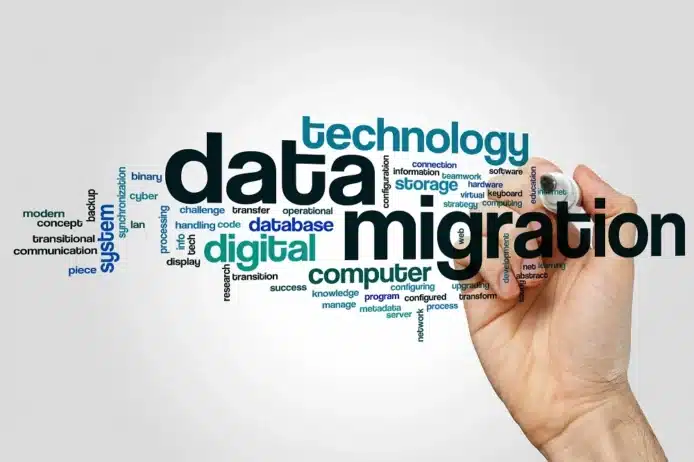Streamlining Data Transfers: Expert Tips for Efficient Data Migration
The need for seamless data migration has become paramount. Understanding data migration best practices is crucial whether you’re moving to a new database system, transitioning to the cloud, or simply optimizing your existing data infrastructure; this process can be a double-edged sword: when done right, it can drive efficiency, boost productivity, and unlock new opportunities for your business.
Conversely, a poorly executed data migration can result in data loss, system downtime, and costly setbacks. To help you navigate this complex terrain, we’ll delve into some expert tips for efficient data migration, shedding light on unique insights and clever ideas that can make a world of difference.

1. Comprehensive Planning
A solid plan is indispensable before diving into the intricate aspects of data migration. This stage is the backbone of the entire process and is often underestimated. In their eagerness to migrate swiftly, many businesses skip the planning phase, only to encounter issues later. Consider this like planning a road trip: you wouldn’t just start driving without a map or GPS.
2. Data Profiling and Categorization
Some data is mission-critical, some is seldom used, and some may be outdated. To optimize your data migration, it’s essential to profile and categorize your data. Data profiling involves the analysis of data to understand its structure, quality, and content.
For instance, if you’re migrating customer data, you’ll want to know the information contained within it, such as names, addresses, phone numbers, and email addresses. Profiling can also help you identify data anomalies, such as missing values or inconsistencies.
Once you’ve profiled your data, categorization is the next step. This involves grouping data into different categories based on its importance and usage. For example, sensitive customer information may fall into the high-priority category, while older archived records may be a lower priority.
Choosing the Right Migration Method
Selecting the appropriate migration method is another critical aspect of efficient data migration. There are several methods available, and the choice depends on the specific needs of your organization. The most common methods include:
-
ETL
Data migration from one system to another often makes use of ETL. Data is taken from one system and loaded into another after being modified to conform to both specifications.
ETL tools like Apache Nifi, Talend, and Microsoft SSIS are widely used. ETL is beneficial when you need to perform data cleansing, transformation, and validation before migration.
-
Replication
Data replication involves creating a copy of the data in the source system and continuously synchronizing it with the target system. This method is ideal for scenarios where real-time data consistency is crucial.
For example, in e-commerce, it’s essential to keep product information, inventory levels, and customer data up-to-date across multiple systems.
-
Batch Data Migration
Batch migration is a straightforward method where data is transferred in batches at scheduled intervals. It’s an excellent choice when real-time data synchronization is not a priority. For instance, batch migration can efficiently move historical customer records to a new database.
Selecting the right migration method is a pivotal decision, and it should align with your project objectives, data volume, and system compatibility. Remember that a combination of methods may be necessary for complex migrations.
Data Validation and Testing
Data validation and testing are often overlooked, yet they are paramount to ensuring the success of your data migration. The process of validation includes verifying that the data in the target system matches the data in the source system.
Running data validation checks can help identify discrepancies and errors early in the migration process. For instance, if you’re migrating product data to a new e-commerce platform, validation can ensure that product names, descriptions, and prices match the source system.
It’s crucial to establish a robust testing environment before commencing the migration. This environment should closely resemble the production environment to identify potential issues that might arise in the real migration.
Comprehensive testing includes data migration, user acceptance, and stress testing. The latter is critical as it assesses the system’s performance under heavy data loads. By thoroughly validating and testing the migration process, you reduce the risk of data corruption, loss, or system downtime.
Change Management and Stakeholder Communication
Data migration often entails changes in how data is accessed, managed, and utilized within an organization. To mitigate potential disruption, it’s vital to implement change management strategies. Ensure that your team is adequately trained to use the new system, and provide resources for addressing any hiccups that may arise during the transition.
Effective stakeholder communication is equally crucial. Keep all relevant parties informed about the migration process, including timelines, potential disruptions, and contingency plans.
For example, if you’re migrating to a customer relationship management (CRM) system, ensure that the sales and support teams are well-prepared for any changes in how they access customer information.
Monitoring and Continuous Improvement
Even after the migration is complete, the journey doesn’t end. Monitoring the new system’s performance and data integrity is an ongoing task. Implement robust monitoring tools that provide insights into system health, data accuracy, and user interactions.
Regularly review and refine your data migration process, considering lessons learned from the migration. By continuously improving your data migration approach, you can adapt to changing business needs and evolving technology.
Final Words
Data migration is a multifaceted process that demands meticulous data planning, profiling, and categorization. Selecting the right migration method, thorough data validation, and testing are essential steps in ensuring the efficiency and success of the migration.
Change management and stakeholder communication help minimize disruptions, and continuous improvement ensures your data migration strategy remains agile and responsive to evolving needs. By adhering to these expert tips for efficient data migration, you’ll not only streamline the process but also future-proof your data management efforts.